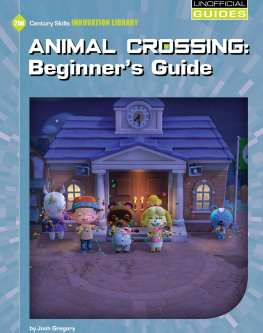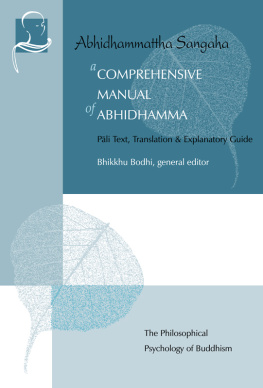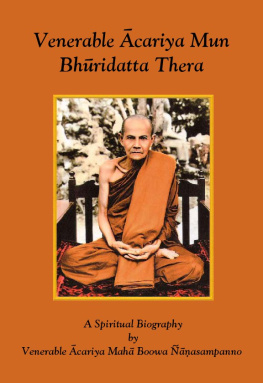Venerable Acariya Thoon Khippapañño - Traverse the Current [Crossing the Stream]
Here you can read online Venerable Acariya Thoon Khippapañño - Traverse the Current [Crossing the Stream] full text of the book (entire story) in english for free. Download pdf and epub, get meaning, cover and reviews about this ebook. year: 2000, genre: Religion. Description of the work, (preface) as well as reviews are available. Best literature library LitArk.com created for fans of good reading and offers a wide selection of genres:
Romance novel
Science fiction
Adventure
Detective
Science
History
Home and family
Prose
Art
Politics
Computer
Non-fiction
Religion
Business
Children
Humor
Choose a favorite category and find really read worthwhile books. Enjoy immersion in the world of imagination, feel the emotions of the characters or learn something new for yourself, make an fascinating discovery.
- Book:Traverse the Current [Crossing the Stream]
- Author:
- Genre:
- Year:2000
- Rating:3 / 5
- Favourites:Add to favourites
- Your mark:
- 60
- 1
- 2
- 3
- 4
- 5
Traverse the Current [Crossing the Stream]: summary, description and annotation
We offer to read an annotation, description, summary or preface (depends on what the author of the book "Traverse the Current [Crossing the Stream]" wrote himself). If you haven't found the necessary information about the book — write in the comments, we will try to find it.
Traverse the Current [Crossing the Stream] — read online for free the complete book (whole text) full work
Below is the text of the book, divided by pages. System saving the place of the last page read, allows you to conveniently read the book "Traverse the Current [Crossing the Stream]" online for free, without having to search again every time where you left off. Put a bookmark, and you can go to the page where you finished reading at any time.
Font size:
Interval:
Bookmark:
Traverse the Current
By Venerable Ajarn Thoon Khippapanyo
Translation from Thai by Asvin Nimmanheminda
Copyright K.P.Y. Organization 2000
For free distribution only. Reprinting for sale is prohibited.
All rights reserved.
Introduction
Nowadays, the number of people who become interested and practice mental development is on the rise because they find Buddhism interesting. They are interested in mental development because it leads directly into a practicing field and because they can experience some results right away.
Anybody, regardless of nationality, class, or caste, can practice. They can practice anywhere in the world. And, when they practice, they will be rewarded with happiness, physically and mentally.
It does not matter whether you are very educated or not. As long as you are very determined, you will definitely see the fruits of your practice. The important thing, though, is that you must understand the concept of the practice correctly, meaning that you will have to understand the various means that will teach the mind to see things the way they really are . Here, are some of the means that you will need to know: walking meditation, sitting meditation, selection of the right mantra-word for 'tranquillity meditation' or 'concentration', or selection of a right subject to be contemplated in an 'insight meditation' or 'contemplation'.
In a correct practice, you need to use both , the 'tranquillity meditation' or 'concentration' and the 'insight meditation' or 'contemplation'. If you use one but not the other, your mental development scheme will lack something very important. And if that happens, the results that come out will reflect that lacking. From now on, tranquillity meditation will be referred to as concentration and insight meditation will be referred to as contemplation. Though, at times, they may be used interchangeably.
There are many means to teach the mind in concentration and there are many means to teach the mind in contemplation . With so many means to choose from, you can choose anything that suits your temperament and habit best so that difficulties will be eased to a manageable level. For mental development to yield good results, the most important factor is determination . Without it, the practice is bound to fail or will keep starting over and over again without progressing anywhere. This is because determination is synonymous to mindfulness. Without the mindfulness, there can be no determination. Without determination, anything that you do will have a little chance of success; if succeeded, it will be mediocre or short-lived.
Concentration
Preparation for Walking Meditation
First, you must prepare a path for the walking. It should be approximately one meter in width and about fifteen meters in length. The surface of the path should be leveled so that you can walk with ease and be spared from anything that will cause anxiety. Before you start walking, proceed to one end of the path and stand facing the opposite end. Join the palms of both hands together and raise them to chest level or between the eyebrows, silently recite the following: I am going to do a walking meditation as a token of reverence for the Buddha, his teachings and his holy disciples. I extend this reverence to my father, mother, teachers, mentors, and those who give supports. Let me be blessed with mindfulness, calmness, and insight into the truth the way it really is.
May all the merits that arise from this walking meditation befall upon all living creatures, be they humans or non-humans. May all creatures live peacefully and blessed with the fruits of these merits of their own volition.
When you finish with the praying, lower the hands down but still holding the left hand with the right hand. Stand erect with your head slightly bowed in a thoughtful stance. Concentrate your mind on something that is neutral, meaning that you must try hard not to let your mind be swayed toward anything that you like or dislike.
One mean to teach the mind to stay neutral is to make it focus its concentration on the task of walking meditation. Discard any thoughts of anything outside of yourself that will distract the mind from staying neutral. Then proceed to concentrate on uttering of mantra-words in your mind.
[Mantra-words are uttered silently or loudly while you are breathing in and out. It is a mean to occupy the mind with a certain object so it will not think of anything else.]
Application of Mantra-Words
With determination, focus your concentration on breathing the air in deeply while thinking BUD.
With determination, focus your concentration on breathing the air out deeply while thinking DHO.
With determination, focus your concentration on breathing the air in deeply while thinking DHAM.
With determination, focus your concentration on breathing the air out deeply while thinking MO.
With determination, focus your concentration on breathing the air in deeply while thinking SANG.
With determination, focus your concentration on breathing the air out deeply while thinking KHO.
[Bud-dho, Dham-mo, Sang-kho are popular mantra-words that are used by practitioners in Thailand. They mean the Buddha, his teachings and his holy disciples. You can choose any other words to suit your liking.]
Repeat the whole thing three to seven times or as many times as you like. This is a mean to bring in the Buddha, his teachings and the holy disciples into your mind.
After that, use only the mantra-words Bud and Dho alone, and proceed with the walking.
The First Method of Walking Meditation
With determination, focus your concentration on stepping slowly forward with your left leg while thinking Bud, then step slowly forward with your right leg, thinking Dho.
While the mindfulness is focusing on the mantra-words, it must also be focusing on the motion of each leg while it is stepping forward. Any time that you are not aware of the motions of the legs, it means that your mindfulness becomes unknowingly distracted and that your determination is insufficient. You must restore your determination and proceed with what you are doing again and again until you can manage to be mindful of everything all the time. Do not walk too slowly or too rapidly; the paces should be the same as when you are walking normally.
This is walking meditation in concentration, meaning that you treat the motions of the walking as mental target or nimitta of your concentration in order to exercise your mindfulness and determination. When you reach the end of the path, it is a tradition to always turn back in a clockwise direction.
The Second Method of Walking Meditation
In this exercise, do not focus your concentration on the motions of the legs while you are walking. With determination, concentrate on breathing the air in deeply while thinking BUD. With determination, concentrate on breathing the air out deeply while thinking 'DHO'.
Try to keep your the mindfulness, the mantra-words, the knowing-facility' of the mind, and determination in the same picture so that you will be able to concentrate whenever you want to.
When you are tired of walking, you can stop walking but remain standing. Keep concentrating on the mantra-words and the breathings so that there is no interruption during the transition.
The Third Method of Walking Meditation
With determination, nominate a part of the body as 'mental target' or nimitta of your concentration.
You can choose any part of the body as long as it is a part that you are comfortable with and easy to see. Make the part a mental target for mindfulness to concentrate upon. Let the mindfulness together with the 'knowing-facility' of the mind concentrate on the part without being distracted away from it unknowingly.
At first, the mental image that you will see will be rather blurry but what you must do is to limit the area where the part of the body is situated to be small enough so that the mind will have no trouble focusing on it.
Next pageFont size:
Interval:
Bookmark:
Similar books «Traverse the Current [Crossing the Stream]»
Look at similar books to Traverse the Current [Crossing the Stream]. We have selected literature similar in name and meaning in the hope of providing readers with more options to find new, interesting, not yet read works.
Discussion, reviews of the book Traverse the Current [Crossing the Stream] and just readers' own opinions. Leave your comments, write what you think about the work, its meaning or the main characters. Specify what exactly you liked and what you didn't like, and why you think so.

![Venerable Acariya Thoon Khippapañño Traverse the Current [Crossing the Stream]](/uploads/posts/book/258699/thumbs/venerable-acariya-thoon-khippapa-o-traverse.jpg)











